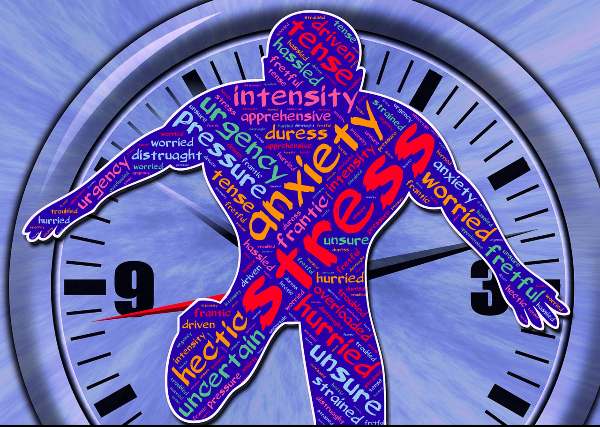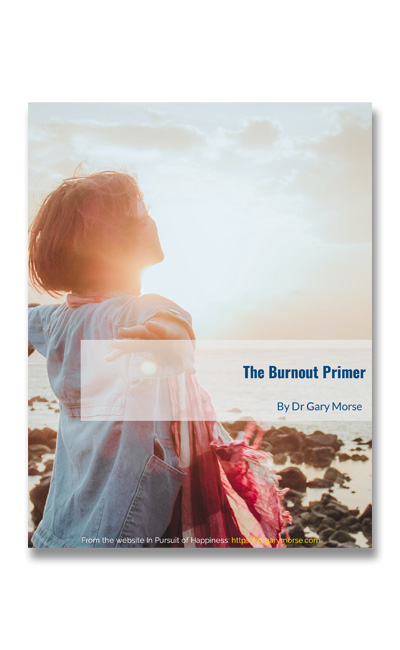If we look closely, we can see in the wake of the coronavirus pandemic the unmistakable signs of yet another pandemic that has been largely ignored: burnout.
Burnout has been around for a long time—the concept was first labeled as a condition in the 1970s—but the problem is growing worse.
In the past, burnout has been called a “problem,” a “crisis,” and most recently, an “epidemic.”
Truth to be told, however—even though we are understandably weary of pandemics after two-plus years with COVID—the spread of burnout constitutes yet another pandemic.
The term pandemic fits our current experience of burnout for three major reasons:
1. Burnout is very prevalent. Even just before the start of the COVID pandemic, most workers in the United States experienced burnout, according to a Gallup probability survey (PDF).More specifically, more than three out of four workers experienced significant burnout (48% feeling it “sometimes,” 21% “very often” and 7% “always”).
Not surprising, given that burnout is a stress-related condition, most American workers (79%) recently felt stressed by work, according to another large survey in 2021 by the American Psychological Association (APA).
Prior APA surveys show that work is consistently one of the top two stressors (along with money) in people’s lives, affecting around 70%.
While burnout was at pandemic levels even before the coronavirus pandemic, work stress and burnout have only gotten worse since the start of COVID, as a large survey by Deloitte has shown. (PDF)
2. Burnout is widespread across every type of job. Burnout was originally conceptualized to describe the consequences of chronic stress among those in helping professions, such as doctors, nurses, counselors. Recent survey data show, however, that burnout is a condition common to every major job category.
Gallup survey data are again especially illuminating, showing that burnout (defined in this 2022 study with a higher bar of occurring “always or very often”) ranged across 14 occupational fields from a low of 21% in finance to a high of 44% in K through 12 education.
It is striking that even in the fields with the lowest rates, such as finance, construction, technology—that more than one in five (up to one in four) workers experienced burnout very often or always.
3. Burnout is spread across the globe. A 2021-2022 survey of 5,000 women in 10 countries the Deloitte survey found increasing rates of stress and that nearly half (46%) of all women felt burned out. The high rates of burnout were found in countries ranging from the United States to South Africa to China to the United Kingdom to Australia.
The Consequences of Burnout are Multiple and Serious
Burnout is not only common and widespread, it is also serious.
Burnout is most often defined when individuals have one or more of the following three frequent or intense reactions to work:
- Emotional exhaustion or a depletion of energy
- Negativity or cynicism about one’s job, or a sense of distance and withdrawal from the job
- A feeling of ineffectiveness or lack of a sense of accomplishment
Obviously, none of those reactions are pleasant.
They are especially tragic given that most people pursue careers for reasons such as personal growth, meaning, the desire to make a positive difference in the world, and in hopes of experiencing fulfillment and satisfaction. But too often work leaves us exhausted, cynical, unsatisfied—and, to make matters worse, with our own health and social problems, and ready to quit.
As summarized in prior review of research, my colleagues and I found that burnout is often accompanied by a wide range of other negative experiences, including:
- Mental health symptoms, especially anxiety, depression, irritability.
- Physical health problems, including headaches, insomnia, GI disturbances.
- Problematic substance use, involving both alcohol and drugs.
- Social difficulties, both on the job, and in one’s marriage and family.

Graphic by John Hain, Pixabay
The Impact on Organizations
The negative effects of burnout accrue for the employer organization as well as the individual employee. Specifically, the negative consequences of employee burnout for businesses and organizations include:
- Less engaged and committed employees
- Higher rates of absenteeism
- Problems with customer service and client care
- Higher rates of employee turnover
- Higher costs (e.g., due to lower production, costs of recruiting and training new staff)
Despite the serious and multiple of consequences of burnout—to employees, their employer organizations, and the customers and clients they serve—relatively little attention has been devoted to burnout.
A Growing Recognition
Only in recent years, have we begun to recognize the seriousness of burnout.
In May, 2022, the United States Surgeon General Dr. Vivek Murphy issued an advisory (PDF) about the seriousness of burnout among health workers, based on both pre-pandemic crisis levels and a worsening of the situation due to the COVID pandemic
Similarly, the United States Education Secretary Miguel Cardona called out the problem after the June 2022 release of new Gallup poll results showing that teachers were suffering from the highest rates of burnout of any occupational field
The statements by the Surgeon General and the Education Secretary are welcomed steps in the right direction. However, the problem of burnout is far more extensive, as the Gallup data has shown, than affecting just health care workers and educators. Burnout is prevalent in every field.
Despite growing awareness of the problem, little is still being done to address burnout. It is almost as if we are resigned to accepting burnout as an inevitable aspect of modern work.
But the costs of burnout are too great for everyone involved: employees, businesses and organizations, customers and clients.
Time for Action
Inaction is unacceptable.
Burnout doesn’t have to be—and shouldn’t—be an inevitable cost of working.
Employees and organizations need strategies to overcome the negative effects of burnout.
Further, our goal needs to be more than to simply reduce burnout. Across our lives, most of us will spend more time working than in any other single activity, other than sleeping and breathing.
Work should bring us something more than a paycheck.
Indeed, work can be a positive experience—a way for us to experience personal meaning, fulfillment.
Quite simply, our work can enhance—rather than harm—our happiness and well-being.
To do so, however, we need to act.
Fortunately, a number of strategies show promise for helping people to recover from burnout and to prevent its occurrence.
Unfortunately, there is disagreement about how to best combat burnout.
For many, including Education Secretary Cardona, self-care seems imperative. As Cardona urged teachers, “you must take care of yourselves . . . .we must be good to ourselves.”
Others, like Jennifer Moss, author of the recent book, The Burnout Epidemic, emphatically argue that individual self-care skills “are not the cure for burnout, nor are they the vaccine” [p.4]. Moss, like others, advocates organizational strategies as the means by which we can reduce burnout.
Both of these perspective have value.
And yet each is only a partial solution.
The Need for a New and Holistic Approach
To wage a successful campaign against the pandemic of burnout, we need a new and holistic perspective.
In particular, we need a four-pronged, systems perspective that includes strategies in each of the following four areas. I have created detailed blog posts describing each level of this four-prong, holistic approach while highlighting some of the key strategies to end and prevent burnout.
- Organizations (See: How to Reduce Burnout and Foster Employee Well-Being – Part 1: 8 Key Strategies for Businesses and Organizations)
- Supervisors and Managers (See: How to Reduce Burnout and Foster Employee Well-Being – Part 2: Seven critical strategies for managers and supervisors)
- Individual employees (See: How to Reduce Burnout and Foster Employee Well-Being – Part 3: BREATHE Program for Individuals)
- Our collective or cultural response (See:Tackling Burnout: Addressing Culture)
The holistic approach may seem like a lot of work, but every action will help. I have seen these strategies significantly reduce burnout in more than 20 years of consulting and training with a wide range of employees and organizations.
And too much is at stake—including our sense of meaning, well-being, health—and the survival of our businesses and organizations—to continue to ignore the pandemic of burnout.
-- Credit: Lead photo is by Elisa Ventur, Unsplash.com



Follow Me: